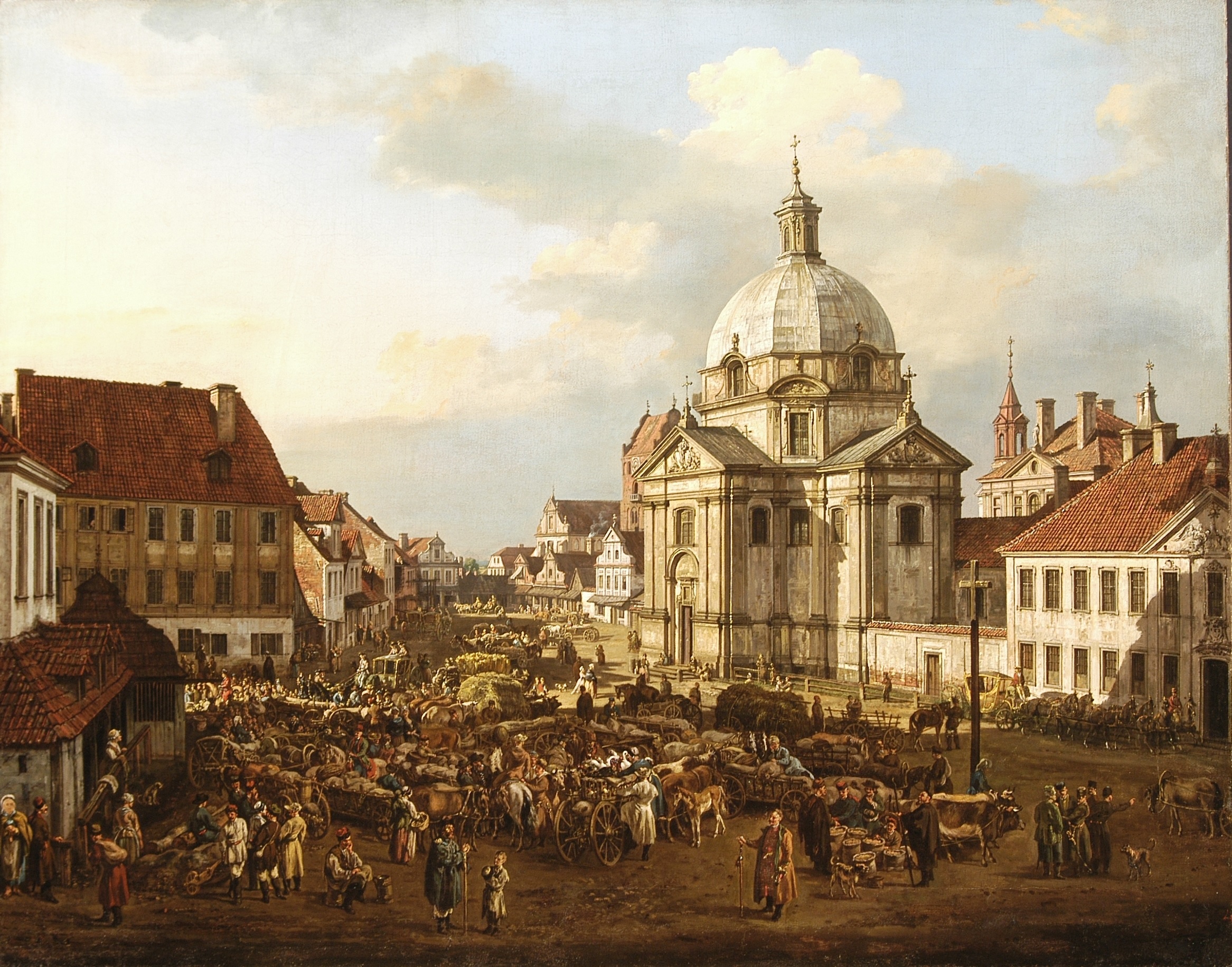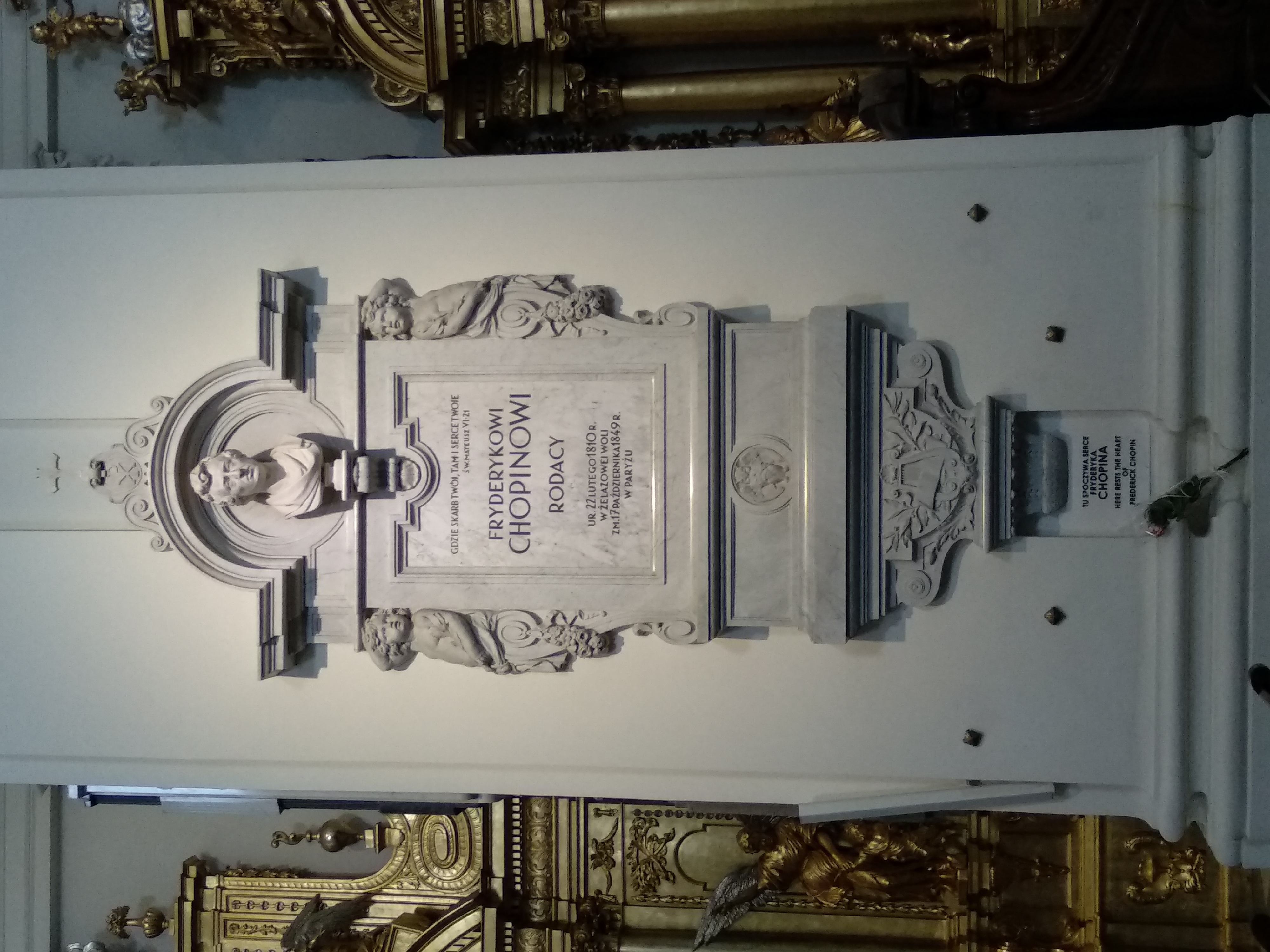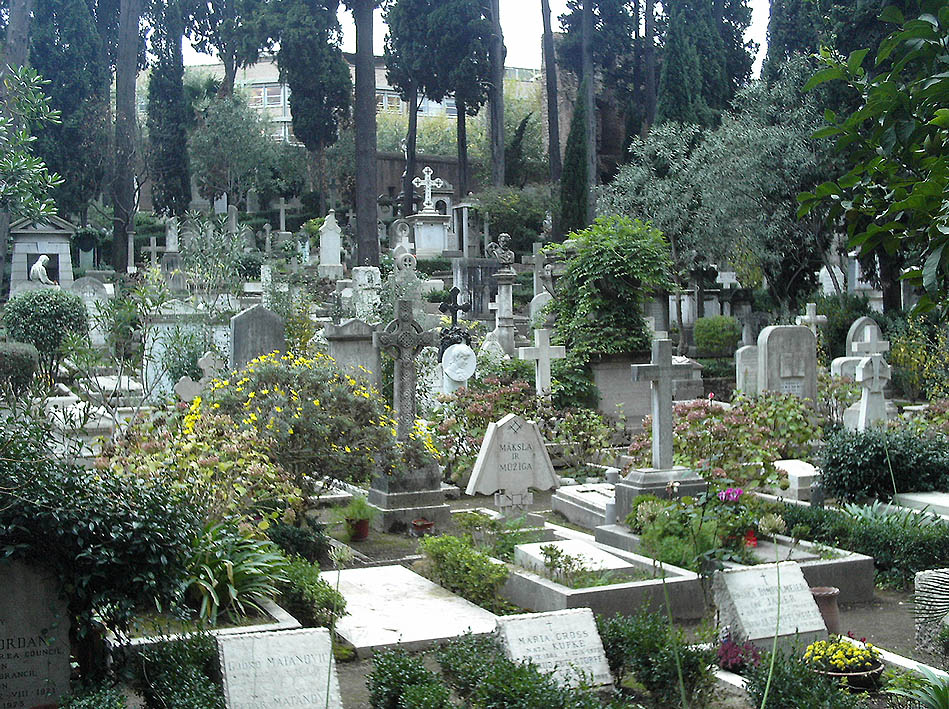|
Stanisław Jackowski
Stanisław Jackowski (1887 in Warsaw – 1951 in Katowice) was a Polish sculptor, and nephew of novelist Bolesław Prus. In 1909-11 Jackowski studied sculpture at the Academy of Fine Arts in Kraków under Konstanty Laszczka, as well as the history of art at Kraków University. In 1911-12 he attended the Académie Colarossi in Paris, France. Stanisław Jackowski was born in 1887 to Polish parents in Warsaw, in the part of Poland then ruled by the Russian Empire following the Partitions of Poland. Jackowski completed his art studies before the First World War in Kraków, the Austrian-ruled part of Poland, and throughout the Interwar period lived and worked in Warsaw. He was a member, and for many years president, of the ''Rzeźba'' (Sculpture) Society. Jackowski died in 1951 in Katowice, Poland. Works In 1912 Jackowski designed the Powązki Cemetery tomb of his uncle, novelist Bolesław Prus. The monument bears on three sides, respectively, the writer's actual name Aleksa ... [...More Info...] [...Related Items...] OR: [Wikipedia] [Google] [Baidu] |
Warsaw
Warsaw, officially the Capital City of Warsaw, is the capital and List of cities and towns in Poland, largest city of Poland. The metropolis stands on the Vistula, River Vistula in east-central Poland. Its population is officially estimated at 1.86 million residents within a Warsaw metropolitan area, greater metropolitan area of 3.27 million residents, which makes Warsaw the List of cities in the European Union by population within city limits, 6th most-populous city in the European Union. The city area measures and comprises List of districts and neighbourhoods of Warsaw, 18 districts, while the metropolitan area covers . Warsaw is classified as an Globalization and World Cities Research Network#Alpha 2, alpha global city, a major political, economic and cultural hub, and the country's seat of government. It is also the capital of the Masovian Voivodeship. Warsaw traces its origins to a small fishing town in Masovia. The city rose to prominence in the late 16th cent ... [...More Info...] [...Related Items...] OR: [Wikipedia] [Google] [Baidu] |
Austro-Hungarian Empire
Austria-Hungary, also referred to as the Austro-Hungarian Empire, the Dual Monarchy or the Habsburg Monarchy, was a multi-national constitutional monarchy in Central Europe between 1867 and 1918. A military and diplomatic alliance, it consisted of two sovereign states with a single monarch who was titled both the Emperor of Austria and the King of Hungary. Austria-Hungary constituted the last phase in the constitutional evolution of the Habsburg monarchy: it was formed with the Austro-Hungarian Compromise of 1867 in the aftermath of the Austro-Prussian War, following wars of independence by Hungary in opposition to Habsburg rule. It was dissolved shortly after Hungary terminated the union with Austria in 1918 at the end of World War 1. One of Europe's major powers, Austria-Hungary was geographically the second-largest country in Europe (after Russia) and the third-most populous (after Russia and the German Empire), while being among the 10 most populous countries worldwide. T ... [...More Info...] [...Related Items...] OR: [Wikipedia] [Google] [Baidu] |
List Of Polish Artists
The following is a list of some important Polish artists and groups of artists. __NOTOC__ A * Magdalena Abakanowicz (1930–2017), sculptor * Julia Acker (1898–1942), painter * Jankel Adler (1895–1949), painter * Hiacynt Alchimowicz (1841–1897), painter * Tadeusz Ajdukiewicz (1852–1916), painter * Zygmunt Ajdukiewicz (1861–1917), painter * Kazimierz Alchimowicz (1840–1916), painter * Paweł Althamer (born 1967), sculptor, video art * Maess Anand (born 1982), drawing artist * Zygmunt Andrychiewicz (186100–1943), painter * Włodzimierz Antkowiak (born 1946), painter, poet * Zofia Atteslander (1874–1928), painter * Teodor Axentowicz (1859–1938), painter B * Marcello Bacciarelli (1731–1818), painter * Stanisław Baj (born 1953), painter * Ladislaus Bakalowicz (1831–1904), painter * Stefan Bakałowicz (1857–1947), painter * Mirosław Bałka (born 1958), sculptor * Andrzej Marian Bartczak (born 1945), painter, ill ... [...More Info...] [...Related Items...] OR: [Wikipedia] [Google] [Baidu] |
Skaryszewski Park
Skaryszew Park (pronounced ) is an urban, monumental park located in the Praga-Południe (South Praga) district of Warsaw, Poland. The park was designed and created by Franciszek Szanior in 1906.Praga Południe, Michał Pilich, wyd. Urząd Dzielnicy Praga Południe m. st. Warszawy Location and name Skaryszew Park is situated on the right bank of Vistula River. It occupies 58 ha, an area formerly made of meadows and pastures which previously belonged to the village of Skaryszew in the 17th and 18th centuries. In 1929, during the interwar period, the park was named after Ignacy Jan Paderewski, a famous Polish pianist, composer, and politician who contributed significantly to Poland's independence. Paderewski's name, removed after World War II for political reasons, was finally restored in 1980. Varsovians, especially the young ones, usually call the park “Skaryszak”. Monuments * Bust of Ignacy Jan Paderewski (1988). Stands at the entrance to the park. Founded by Janina an ... [...More Info...] [...Related Items...] OR: [Wikipedia] [Google] [Baidu] |
Bas-relief
Relief is a sculptural method in which the sculpted pieces remain attached to a solid background of the same material. The term ''relief'' is from the Latin verb , to raise (). To create a sculpture in relief is to give the impression that the sculpted material has been raised above the background plane. When a relief is carved into a flat surface of stone (relief sculpture) or wood ( relief carving), the field is actually lowered, leaving the unsculpted areas seeming higher. The approach requires chiselling away of the background, which can be time-intensive. On the other hand, a relief saves forming the rear of a subject, and is less fragile and more securely fixed than a sculpture in the round, especially one of a standing figure where the ankles are a potential weak point, particularly in stone. In other materials such as metal, clay, plaster stucco, ceramics or papier-mâché the form can be simply added to or raised up from the background. Monumental bronze reliefs are ... [...More Info...] [...Related Items...] OR: [Wikipedia] [Google] [Baidu] |
Holy Cross Church, Warsaw
The Church of the Holy Cross () is a Roman Catholic house of worship in central Warsaw, Poland. It is located on ''Krakowskie Przedmieście'', opposite the main Warsaw University campus. One of the most notable Baroque churches in Poland's capital, its interior contains the heart of Frédéric Chopin, embalmed heart of composer Frédéric Chopin. The Holy Cross Church is currently administered by friars belonging to the Congregation of the Mission of Vincent de Paul. History As early as the 15th century, a small wooden chapel of the Holy Cross had been erected here. In 1526 the chapel was demolished, and a newer church was erected. Refurbished and extended by Paweł Zembrzuski in 1615, the church was too small to fill the needs of the growing city. Initially located well outside the city limits, by the 17th century it had become one of the main churches in the southern suburb (''przedmieście'') of the city that had in 1596 become Poland's capital. In 1653 Queen Ludwika Maria G ... [...More Info...] [...Related Items...] OR: [Wikipedia] [Google] [Baidu] |
Jan Kiliński
Jan Kiliński (1760 in Trzemeszno - 28 January 1819 in Warsaw) was a Polish soldier and one of the commanders of the Kościuszko Uprising. A shoemaker by trade, he commanded the Warsaw Uprising of 1794 against the Russian garrison stationed in Warsaw. He also became a member of Polish provisional government. Biography Jan Kiliński was born in Trzemeszno, a minor town in the Greater Poland voivodeship. In 1780 he settled in Warsaw, where he became a shoemaking master in 1788. One of the most prominent burghers of the time, he was elected member of the city council three times in a row between 1791 and 1793. During the Warsaw Uprising of 1794, Kiliński formed a unit of National Militia and led his forces, along with the forces of the regular army, against the Russian occupation forces. On April 19 of that year, following the Russian withdrawal, he signed the Access of the city of Warsaw to the Kościuszko's Uprising and entered the Provisional Temporary Council, a temporary r ... [...More Info...] [...Related Items...] OR: [Wikipedia] [Google] [Baidu] |
Tadeusz Kościuszko
Andrzej Tadeusz Bonawentura Kościuszko (; 4 or 12 February 174615 October 1817) was a Polish Military engineering, military engineer, statesman, and military leader who then became a national hero in Poland, the United States, Lithuania, and Belarus. He fought in the Polish–Lithuanian Commonwealth's struggles against Russian Empire, Russia and Kingdom of Prussia, Prussia, and on the U.S. side in the American Revolutionary War. As Supreme Commander of the Polish National Armed Forces, he led the 1794 Kościuszko Uprising. Kościuszko was born in February 1746, in a manor house on the Mieračoŭščyna, Mereczowszczyzna estate in Brest Litovsk Voivodeship, then Grand Duchy of Lithuania, a part of the Polish–Lithuanian Commonwealth, now the Ivatsevichy District of Belarus. At age 20, he graduated from the Corps of Cadets (Warsaw), Corps of Cadets in Warsaw, Poland. After the start of the War of the Bar Confederation in 1768, Kościuszko moved to France in 1769 to study. He r ... [...More Info...] [...Related Items...] OR: [Wikipedia] [Google] [Baidu] |
Protestant Cemetery, Rome
The Non-Catholic Cemetery (), also referred to as the Protestant Cemetery () or the English Cemetery (), is a private cemetery in the Rioni of Rome, rione of Testaccio in Rome. It is near Porta San Paolo and adjacent to the Pyramid of Cestius, a small-scale Egyptian-style Egyptian pyramids, pyramid built between 18 and 12 BCE as a tomb and later incorporated into the section of the Aurelian Walls that borders the cemetery. It has Mediterranean cypress, pomegranate and other trees, and a grassy meadow. It is the final resting place of non-Catholics including but not exclusive to Protestantism, Protestants or British people. The earliest known burial is that of a Dr Arthur, a Protestant medical doctor hailing from Edinburgh, in 1716. The English poets John Keats and Percy Bysshe Shelley, as well as Russian painter Karl Briullov and Italian Marxist Antonio Gramsci are buried there. History Since the norms of the Catholic Church forbade burying on consecrated ground non-Catholics ... [...More Info...] [...Related Items...] OR: [Wikipedia] [Google] [Baidu] |
Rome
Rome (Italian language, Italian and , ) is the capital city and most populated (municipality) of Italy. It is also the administrative centre of the Lazio Regions of Italy, region and of the Metropolitan City of Rome. A special named with 2,746,984 residents in , Rome is the list of cities in the European Union by population within city limits, third most populous city in the European Union by population within city limits. The Metropolitan City of Rome Capital, with a population of 4,223,885 residents, is the most populous metropolitan cities of Italy, metropolitan city in Italy. Rome metropolitan area, Its metropolitan area is the third-most populous within Italy. Rome is located in the central-western portion of the Italian Peninsula, within Lazio (Latium), along the shores of the Tiber Valley. Vatican City (the smallest country in the world and headquarters of the worldwide Catholic Church under the governance of the Holy See) is an independent country inside the city boun ... [...More Info...] [...Related Items...] OR: [Wikipedia] [Google] [Baidu] |
Percy Bysshe Shelley
Percy Bysshe Shelley ( ; 4 August 1792 – 8 July 1822) was an English writer who is considered one of the major English Romantic poets. A radical in his poetry as well as in his political and social views, Shelley did not achieve fame during his lifetime, but recognition of his achievements in poetry grew steadily following his death, and he became an important influence on subsequent generations of poets, including Robert Browning, Algernon Charles Swinburne, Thomas Hardy, and W. B. Yeats. American literary critic Harold Bloom describes him as "a superb craftsman, a lyric poet without rival, and surely one of the most advanced sceptical intellects ever to write a poem." Shelley's reputation fluctuated during the 20th century, but since the 1960s he has achieved increasing critical acclaim for the sweeping momentum of his poetic imagery, his mastery of genres and verse forms, and the complex interplay of sceptical, idealist, and materialist ideas in his work. Among his bes ... [...More Info...] [...Related Items...] OR: [Wikipedia] [Google] [Baidu] |
Latin
Latin ( or ) is a classical language belonging to the Italic languages, Italic branch of the Indo-European languages. Latin was originally spoken by the Latins (Italic tribe), Latins in Latium (now known as Lazio), the lower Tiber area around Rome, Italy. Through the expansion of the Roman Republic, it became the dominant language in the Italian Peninsula and subsequently throughout the Roman Empire. It has greatly influenced many languages, Latin influence in English, including English, having contributed List of Latin words with English derivatives, many words to the English lexicon, particularly after the Christianity in Anglo-Saxon England, Christianization of the Anglo-Saxons and the Norman Conquest. Latin Root (linguistics), roots appear frequently in the technical vocabulary used by fields such as theology, List of Latin and Greek words commonly used in systematic names, the sciences, List of medical roots, suffixes and prefixes, medicine, and List of Latin legal terms ... [...More Info...] [...Related Items...] OR: [Wikipedia] [Google] [Baidu] |







